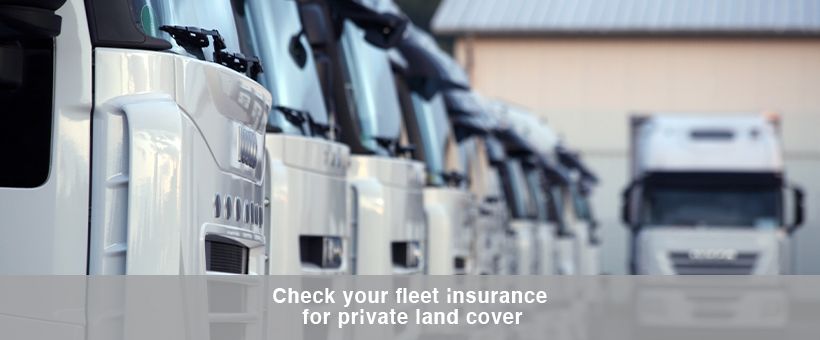
Check your fleet insurance for private land cover
A potentially huge gap in fleet insurance has arisen recently, with insurers now able to exclude incidents which occur on private land from their policies. Given that depots, distribution centres and client premises could all count as private property, on-site vehicle incidents could leave fleets very exposed.
25 people a year die after being struck by a vehicle at their place of work, 17 are struck by a moving object (which may be attached to a vehicle) and a further 10% of non-fatal injuries are caused by being struck by a moving object. In other words, workplace vehicle incidents are still far too common. There are other categories of workplace incident which can also involve vehicles, including falls from height, and people being struck by objects which fall from the vehicle.
How has fleet insurance changed?
The UK government decided to remove the EU ruling which said that insurers must also insure vehicles on private land. As a result, the recent change to the Motor Vehicles (Compulsory Insurance) Bill received Royal Assent on 5 May. It states that compulsory insurance offerings need only cover public roads.
Fleets would be well advised to consult with their insurer as to whether they are covered by their fleet insurance should one of their vehicles have a collision on private property, whether they require an extension to their insurance, or whether such collisions would be covered by a public liability policy.
It’s also worth asking how the insurers are defining private property. Building sites, utilities’ sites, parks, private roads and lanes, residential drives, car parks, farms, distribution centres and depots may all be classed as private property, among many other venues which fleet vehicles may visit. For some fleets this could potentially make their insurance cheaper, if they spend very little time on the public highway.
However, the most important message to take away from this change in the law, is the reminder that vehicle collisions can occur anywhere – and the best defence against collisions is preventative driver training. Safe drivers are safe wherever they drive. And as safety becomes embedded as a cultural value, those safe drivers will also tend towards safety when carrying out other parts of their tasks, whether that is loading or unloading vehicles, securing equipment, or following the health and safety rules for visiting vehicles.
That culture of safety doesn’t happen automatically. It comes from a top down, bottom up approach to accident prevention, which is continually enforced by driver coaching. The SmartDrive video-based safety programme captures all the risky driving behaviours within a fleet and these are then scored by highly trained risk analysts who return them to fleet managers with coaching insights.
This makes coaching drivers towards safer working practices easy and very powerful. Fleets can identify and eliminate the risky behaviours and attitudes which contribute to or cause collisions, on site and on the roads.
Fleets need to be aware of the change in insurance law and what it may mean for their fleet. Ultimately, however, managing and mitigating driver risk will be the single most important contribution to fleet vehicle safety – wherever vehicles are operating.
You can learn more about managing your fleet insurance premiums here.
- Posted by Shannon McNamara
- On August 10, 2022

